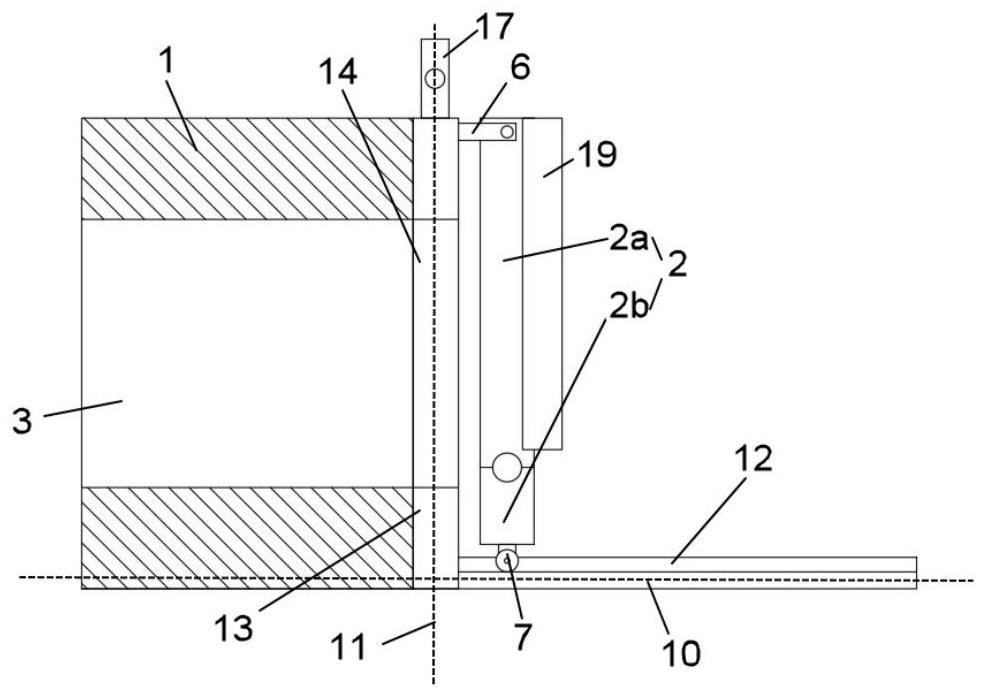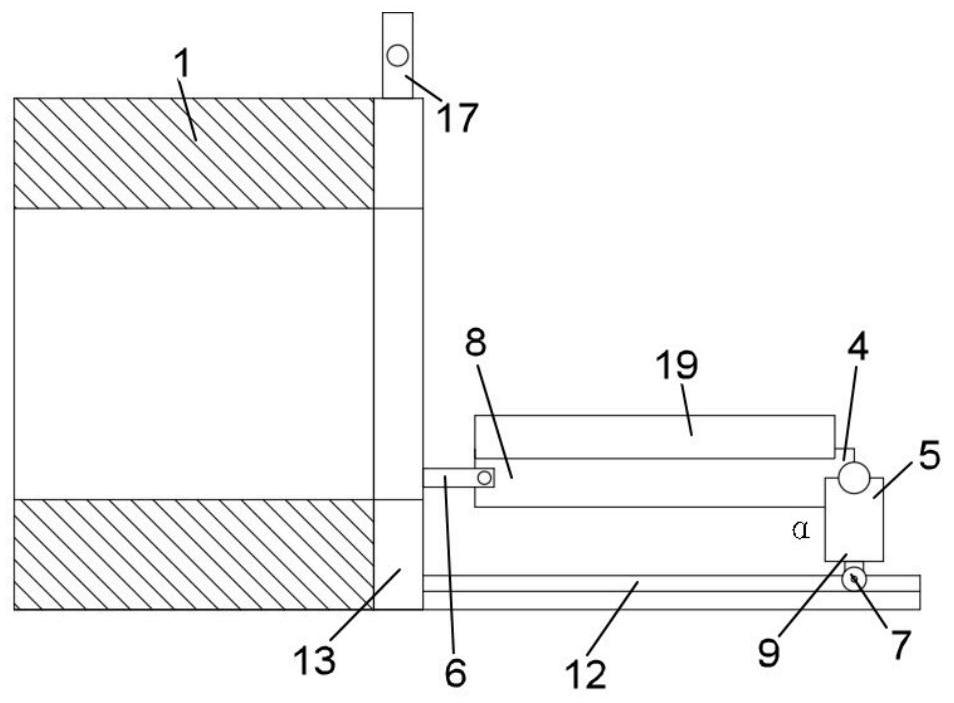Nuclear magnetic resonance detection system
A nuclear magnetic resonance and detection system technology, applied in diagnostic recording/measurement, medical science, sensors, etc., can solve the problem of ferromagnetic objects being sucked in, and achieve the effects of reducing preparation time, facilitating lying down, and improving the degree of fixation
- Summary
- Abstract
- Description
- Claims
- Application Information
AI Technical Summary
Problems solved by technology
Method used
Image
Examples
Embodiment 1
[0031] Such as Figure 1 to Figure 4 As shown, the present application provides a nuclear magnetic resonance detection system, which at least includes a nuclear magnetic resonance body 1 and a lifting platform 2. The nuclear magnetic resonance body 1 has a hollow inspection chamber 3 . The shape of the cross-section of the inspection cavity 3 may be circular. When the patient is placed in the examination chamber 3, the nuclear magnetic resonance body 1 can perform imaging processing on the detection site of the patient, thereby obtaining an image of the internal structure of the patient. The lifting platform 2 is used to provide support to the patient during the patient's detection process, that is, the patient can lie flat on the lifting platform 2.
[0032] Preferably, the lifting platform 2 includes at least a first bed board 2a and a second bed board 2b. The first end 4 of the first deck 2a can be hinged to the second end 5 of the second deck 2b. By being hinged, the f...
Embodiment 2
[0039] Such as Figure 5 to Figure 7 As shown, the lifting platform 2 is provided with a first support body 24 and a second support body 25. When the lifting platform 2 is in the first configuration and the user leans against the lifting platform 2 in a standing manner, The first support body 24 and the second support body 25 can provide support for the user to assist the user to stand. Specifically, both the first support body 24 and the second support body 25 are disposed on the receiving plate 19 . The first supporting body 24 is used to be placed on the patient's left armpit. The second support 24 can be placed under the patient's right armpit. When the patient is in a standing posture, the first support body 24 and the second support body 25 can support the patient. Both the first supporting body 24 and the second supporting body 25 can slide along the receiving plate 19 . Specifically, the receiving plate 19 is provided with a second sliding groove 26 and a third sli...
Embodiment 3
[0043] Such as Figure 8 As shown, the nuclear magnetic resonance detection system of the present application also includes a headrest part 29 , a head cover part 30 and a buttock support part 31 . Both the headrest part 29 and the buttock support part 31 are slidably disposed on the receiving plate 19 , so that when the lifting platform 2 is in the first configuration, both the headrest part 29 and the buttock support part 31 can slide along the second trajectory 10 . Specifically, the receiving plate 19 is provided with a fourth sliding groove 32 and a fifth sliding groove 33. The headrest part 29 is nested in the fourth sliding groove 32, and then the headrest part 29 can slide along the extending direction of the fourth sliding groove 32. The buttock support part 31 is nested in the fifth sliding groove 33, so that the buttock support part 31 can slide along the extending direction of the fifth sliding groove 33. The headrest portion 29 supports the patient's head. The ...
PUM
 Login to View More
Login to View More Abstract
Description
Claims
Application Information
 Login to View More
Login to View More - R&D
- Intellectual Property
- Life Sciences
- Materials
- Tech Scout
- Unparalleled Data Quality
- Higher Quality Content
- 60% Fewer Hallucinations
Browse by: Latest US Patents, China's latest patents, Technical Efficacy Thesaurus, Application Domain, Technology Topic, Popular Technical Reports.
© 2025 PatSnap. All rights reserved.Legal|Privacy policy|Modern Slavery Act Transparency Statement|Sitemap|About US| Contact US: help@patsnap.com



